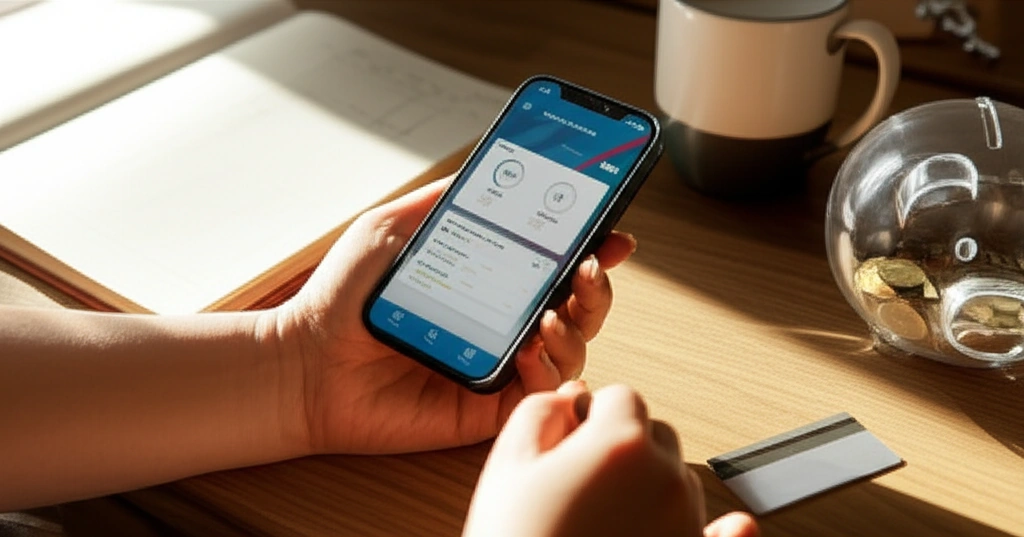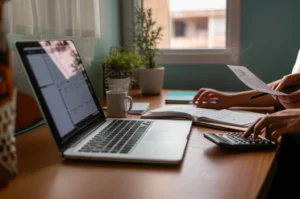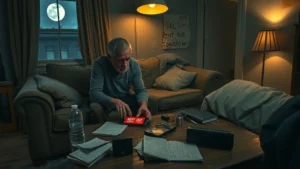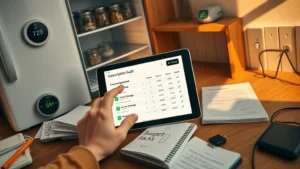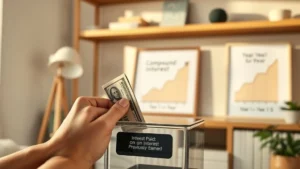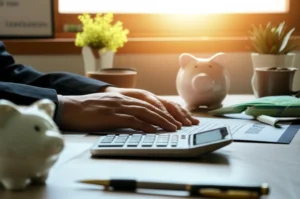Ever felt like you’re supposed to “get” money management, but it just seems… messy? You’re not alone. Forget all the myths you’ve heard, like, “If you’re not rich by 30, you’ve failed.” Seriously? That’s just noise. Here’s the real deal: “better money habits BofA” isn’t some secret club for finance nerds—it’s about figuring out what works for you, right now, whatever your bank account looks like.
No long lectures here. Just quick answers, relatable examples, and tips you can start using today—even if you don’t have a fancy spreadsheet or a clue where all your cash went last month.
Understanding Better Money Habits BofA
So, what is “better money habits BofA”? It’s Bank of America’s honest-to-goodness effort to make the world of money less scary. We’re talking videos, interactive tools, and step-by-step guides, all built to help regular people (not just investment bankers) grab control of their finances—no matter what shape they’re starting from.
On their resource center, you’ll find everything from “how to build your first budget” to “what even is a credit score and why should I care?” The coolest part? You don’t have to wade through fluff—you answer a couple of quick questions, and you get content that matters for your life now. Need stuff in Spanish? They’ve got it. Want to try a budgeting video instead of an article? Done (better money habits video).
But, let’s keep it real: While this platform is a crazy-good resource for learning, it’s not personalized financial advice. Always balance what you read with your own goals, situation, and—if life’s feeling complicated—a talk with a pro.
Real Benefits (And a Few Limits)
Why should you trust better money habits BofA? Here’s a little story. At Castlemont High School, 50+ students got the chance to sit with BofA experts and Peer Leaders. They didn’t just get told to “stop spending on lattes.” Instead, they walked through budgeting, learned how emergencies can happen out of nowhere, and got clear on the fact that your credit score is not some moral scorecard. One student said it best: “It’s never too early to figure this stuff out—my future self is going to thank me.”
This goes way beyond just lectures. In some communities, Better Money Habits volunteers have even created custom programs for Special Olympics athletes—literally meeting people where they are, and keeping it real and practical according to Bank of America.
Now, for the balance: BofA does integrate these lessons with some of their tools (like their banking app or “Erica” assistant), and yes, there are links to products. But the educational content itself stands on its own, and you’re never forced to open a specific account. Just keep in mind—no app or guide replaces actual advice from a certified expert if you’re in a financial jam.
Quick Money Habits That Just Work
If you want to stop being “surprised” by your bank balance, trying out even one of these habits can seriously change your game.
Habit #1: Make a Budget (That Doesn’t Suck)
Let’s be honest—budgeting has a bad rep. It feels restrictive, like a diet where you count every chip. But better money habits BofA nails it with simple steps: figure out where your money’s going (look at real numbers, not guesses), sort by what’s important, and make categories. Think of it like meal prepping for your bank account.
Try this: For 30 days, track everything—groceries, midnight snacks, random online buys. No judgment. Then, break your spending into three buckets: “needs,” “wants,” and “savings.” Suddenly, you see easy wins—maybe you cut one food delivery a week and give your future self a high five.
Habit #2: Build Your “Oh No!” Fund
Emergency funds sound boring—until your car dies or your laptop suddenly quits. BofA recommends starting small: even $20 a week is a win. You’re not racing anyone, you’re just building a cushion for those days when life throws you a curveball.
And here’s a power tip: set up automatic transfers to savings, so you don’t even have to think about it. Little by little, you get peace of mind—that’s priceless.
Habit #3: Manage Credit Like a Pro
Credit feels like secret code, but it’s really just your money “reputation.” Always pay more than the minimum on credit cards, set reminders so bills don’t sneak up, and don’t close old accounts right after paying them off (your credit history matters, who knew?). If you get overwhelmed, BofA’s credit tools break things down with plain language—and some of their interactive guides are surprisingly non-boring.
| Do | Don’t |
|---|---|
| Pay on time, every time | Max out cards or apply for lots of new credit |
| Check your credit report regularly | Ignore those bills “just this once” |
Habit #4: Automate Your Savings (& Bills)
Ever realize you forgot to pay something… a week after it was due? Been there! Setting up automatic savings (even a tiny amount) and scheduling payments means you’re not relying on memory, which—let’s face it—sometimes takes a day off. Automation’s like setting cruise control for your money: less stress, fewer late fees, much more chill vibes.
Habit #5: Learn On-the-Go, Your Way
Money podcasts, quick lessons, videos—whatever fits your learning style. Better money habits BofA has a buffet of short explainer videos and micro-lessons. They’re designed so you can learn on a walk or during your commute. Try picking one new topic each week (start with “budgeting” or “credit basics” if money stuff gives you hives) and see how it clicks. Not a video person? They’ve got articles too. Find your jam and grow at your own pace. By the way, here’s a great place to start: better money habits video.
Money Skills In School? Yes, Please!
Let me tell you about Castlemont High School—students there learned about better money habits budgeting with real talk, not buzzwords. The lessons covered everything from “needs vs. wants” to what’s actually on a credit report (spoiler: it’s not all student loans). When you see students who were once nervous about their bank accounts come out of a session saying, “I actually feel ready for adulting now,” you know something’s working according to PeerForward.
The best part is, these lessons aren’t just for high schoolers. Got a family member about to start college, or a first job? There are classroom-ready resources, including a standout better money habits high school lesson, perfect for starting those money talks early. Teachers, parents—even those of us re-learning this stuff as adults—can get a ton out of these materials.
Interactive Tools & Videos: Make Learning Stick
Let’s face it: Sometimes reading an article doesn’t cut it. Sometimes you just want someone to walk you through a real scenario—like building an emergency fund when you already feel broke. That’s where videos shine. Bite-size, straight to the point, and (honestly) kind of fun. If you’re a watch-and-learn type, check out a few better money habits videos. Grab your phone, pick a playlist: budgeting, basics on credit, saving money hacks. Done.
And hey, if you like mixing resources, there’s a fantastic comparison between BofA’s tools and better money habits Khan Academy materials for budgeting and beyond. Try both and use what clicks!
Personalize Your Money Journey
No two people have the same path. Maybe you’re Gen Z, hustling through side gigs and student loans, like the students in BofA’s latest survey—72% of them have shifted gears to tackle money head-on now that “adulting” is costing more than expected. Or maybe you’re a parent, modeling how to stretch each dollar for your kids as you learn, too.
Here’s the thing—wherever you are, you can personalize how you use better money habits BofA. If your biggest challenge is debt, spend an afternoon digging into their debt payoff planners; you can experiment with snowball vs. avalanche payoff strategies (no math degree required!). Or, if you’ve got a family, set up a “family money meeting” once a month and get everyone involved. Make it fun! Pizza helps.
And please don’t ever think you have to do it alone. If something feels overwhelming, it’s absolutely okay to reach for extra help—whether it’s a trusted nonprofit counselor or a financial planner. The resources are there to get you started… not to do it all for you.
Helpful Tools & Templates To Try
Want a ready-to-roll budget sheet, savings tracker, or quick debt calculator? BofA’s resource center (and related sites) has these in spreadsheet or printable form. Here are a couple of ideas you might love:
- Monthly Budget Template: Track income, spending, and savings goals—super customizable.
- Emergency Fund Calculator: See how fast $10/week grows, and get inspired to keep it rolling.
- Debt Payoff Planner: Tweak the snowball method (smallest debt first) or avalanche (highest interest first) and see what fits. Here’s a mini-comparison you might find handy:
Method Best For Emotion Snowball Quick wins, motivation Pride, relief Avalanche Paying less interest overall Bit slower, but big payoff
If you’re building your “what is better money habits” knowledge base, make sure to check out what is better money habits for straight-to-the-point answers.
Wrapping Up: Your First Step Is Enough
You don’t need a perfect plan. You just need a starting place, and “better money habits BofA” gives you more than a few. If you try one habit—track your spending for a month, or watch one new video on a money topic you dread—give yourself some credit! Progress is made out of tiny, stubborn steps, not giant leaps.
Maybe you want to save for a rainy day, crush some debt, or just feel less anxious about your next credit card bill. You’ve got options—and friends, a lot more info and inspiration out there than you probably realized. Try a lesson, start a conversation with your teens, or finally give that budgeting app a whirl. And if anything here sparked an idea or left you with a lingering question, I encourage you to keep exploring and learning.
So, what’s the biggest money challenge on your mind? Which habit will you try first? Remember: You deserve a future where your money is working with you—not against you. And with the right resources, you’re already closer than you think.

